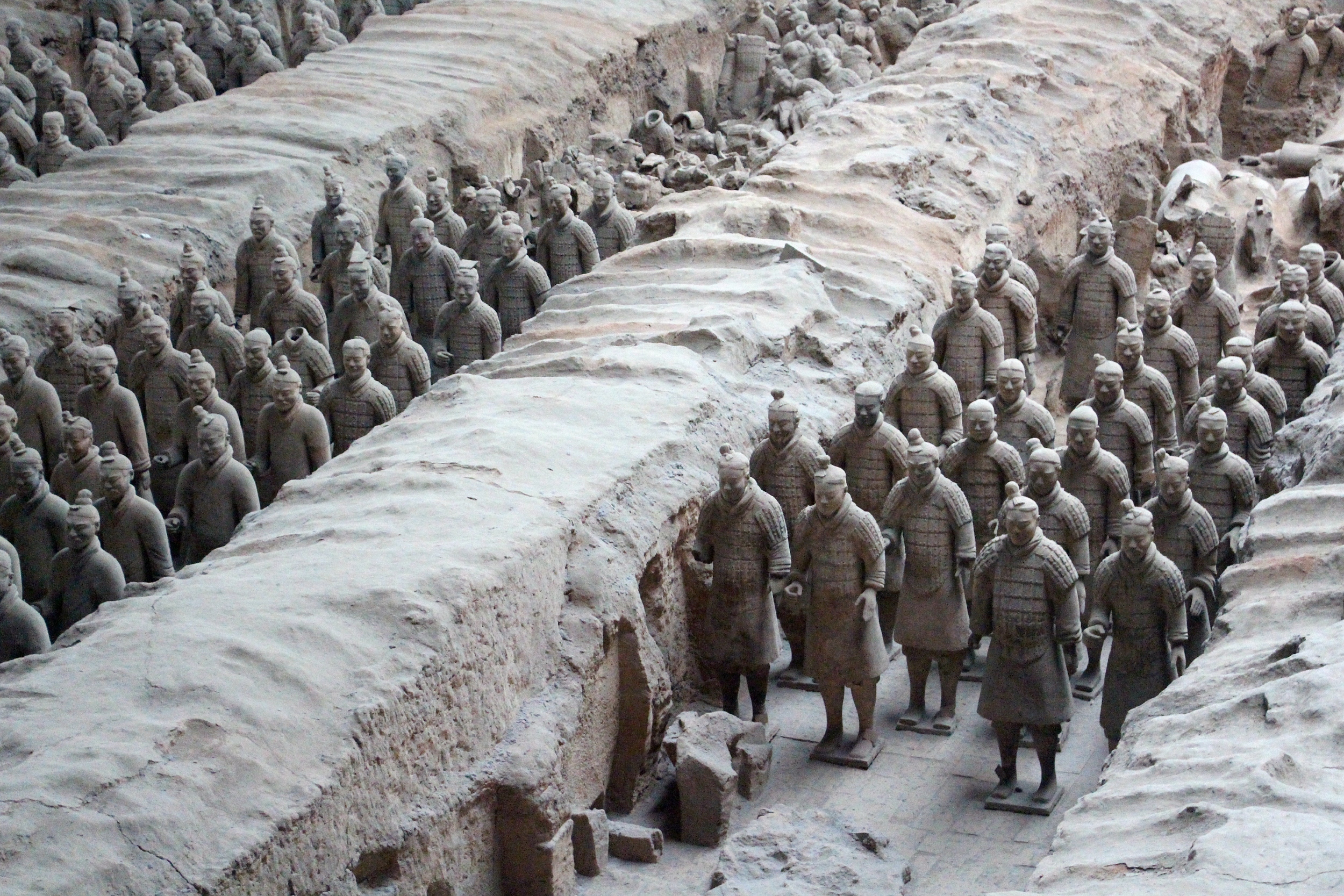
Terracotta Warriors?were?excavated in 1973 in Xi'an, Shaanxi province. (PHOTO: VCG)
By?BI?Weizi
Chinese pottery originated in the Neolithic period. During the Shang and Zhou Dynasties (1600-256BC), the development of hard-pottery craftsmanship flourished. By the Qin and Han Dynasties (221BC-220AD), Chinese were able to produce pottery objects with exquisite craftsmanship and vivid details, the most famous and representative of which is the Terracotta Warriors, consisting of thousands of life-sized ceramic warriors and horses alongside bronze chariots and weapons excavated in 1973 in Xi'an, Shaanxi province.
The production of the Terracotta Warriors not only pursues overall beauty, but also pays great attention to the details of portrayal. The overall conception fully reflects traditional Chinese aesthetic requirements. In terms of technique, the potters made extensive use of circular engravure, relief sculpture and line engraving, which were highly creative then and laid a solid foundation for Chinese ceramics prosperity.
The heads of the warriors are the most complicated part of the works, as well as the most remarkable aspect. Archaeological discoveries showed that the warriors were made up of separate pieces that were then pasted together, with several different molds being used for the faces. Then craftsmen added details to make them different from each other. Finally, these warriors were glazed and painted with different colors, such as red, green, blue, purple, white and black, to achieve a surprisingly realistic effect.
These pigments are made of mineral raw materials. Red is made of cinnabar and lead, green is malachite, blue is blue copper ore and so on. The freshly excavated terracotta figurines still retained their vivid colors, but after excavation, the colors quickly faded due to oxidation. Though some specific production details are still unclear, in terms of pottery making, China was already a world leader at that time.
The trio will conduct a series of experiments in fields such as life science, fluid physics, combustion science and materials science. Notably, this is the first time that fruit flies have been taken on a Chinese space mission as experimental subjects. What made scientists choose fruit flies? What experiment will they undergo?
